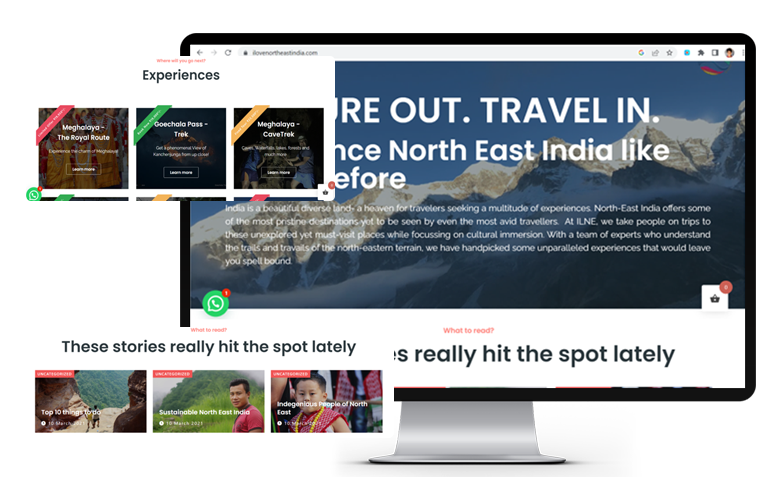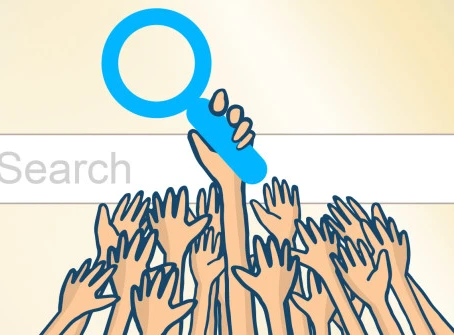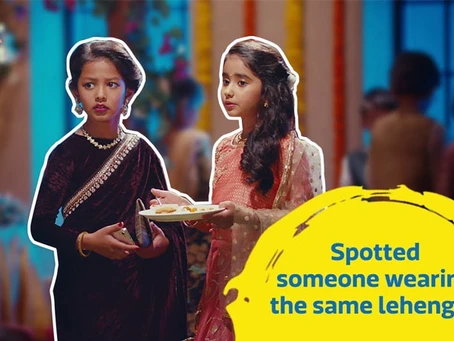Markets today, are swamped with products and each product is trying to establish a conversation with you. What if brands were real people? How would they speak? And have they really been able to develop a conversation style similar to people you would like to connect with? There seems to be a long way to go for many.
Let’s say I meet two people and here’s how they introduce themselves (and here’s what I think about them in my head):
Brad: “Hi, I am Brad. I have got a great job with an awesome pay (Great! But.. er.. what kind of job?). I am charismatic and have got a killer personality (let me be the judge!). Did I tell you my IQ is way above average? So you can bank upon me for taking life-changing decisions(Woah! How do I know, we’ve just met!). All it would take is one cup of coffee with me for you to know that I am the best person you’ve ever met or can ever hope to meet (That’s desperately cheesy!)”
Ted: “Hi, I am Ted. I have been working at Boogle inc. for past 10 years. Currently I head the AI vertical there and am working on the next gen of bots.(Concrete information, brainy person). You are a marketeer isn’t it? I could help you develop a chatbot for your customers if you want (Indeed! I could use one!)On weekends you would find me either trekking or sailing. You can join me for a trip sometime and I am sure together we can have fun (Cool! that would be such a relief from my mundane routine!).
Who do you think I would like to stay in touch with: The ‘Bragger Brad’ or the ‘Transparent Ted’?
Most people in today’s world would prefer Ted and a smart advertiser understands this.
Gone is the time when a product would sell by making unreasonable, untruthful and unverifiable claims. People have matured and outgrown the tactics that were earlier used to captivate them. They have been victims of false promises and are sceptical about trying anything new which claims to be ‘the best’ or ‘miraculous’.
Guesstimates by reputed research firms indicate that on an average 5000 marketing messages per day are hurled at an average person who has access to television, internet and visits nearby stores. These marketing messages can be in the form of labels, logos, hoardings, mails, print ads, jingles, video clips and so on. The list is never-ending.
Customers now have learnt to carry a mental sieve and choose to retain less than 1% of all the marketing messages they come across. What we need to understand is that when it comes to buying something new, the potential customer is cynical. The one thing that can win the faith of a cynic is ‘genuineness’ and here is where transparent marketing comes into picture.
Some people might argue that bragging might actually provoke the listener enough to ask more questions and to enter into a conversation. The ‘Bragging Brad’ approach indeed seemed to be quite effective in the 70’s, 80’s and early 90’s. It was used widely by advertisers to entice the customers by sowing the seeds of questions like “what?”, “how?” and “really?” in their heads hoping that the customer would say “let me try!”.
The basic assumption of this marketing technique is that the target customer would easily ‘want to experiment’. And that’s precisely why today a lot of marketing professionals are finding it difficult to get over the trend of ‘self-praise’ and ‘exaggerated-claiming’.
Reality check: Today’s customer leads a fast-paced lifestyle and wants quick reliable information. She sees herself as smart and emotionally intelligent. If you are questioning the basic intelligence of a customer by using vague flowery terms or by making cliché promises, be prepared to get overlooked. Worse, you might end up repelling a potential customer.
Transparent marketing dares the brand guardians to go beyond the traditional ‘My product is the best’ approach and brings along a new wave of fresh marketing techniques.
If you are a marketing enthusiast wanting to embrace transparent marketing, here’s what you need to learn:
The 5 secrets of transparent marketing
1. Valid + Verifiable = Valuable: Communicate the true value of the product by using terminology which is relevant to your brand and is testable. For example: Showcasing a survey or a research conducted by experts or highlighting past work and expertise of your product developers.
2. ‘Too good to be true’ or ‘too fake to be considered!’: Using non-deceptive marketing tactics is the key to transparent marketing. Exaggerated use of superlative words can lead to a disconnect between your brand and the customer. You should definitely emotionally connect with your customers but don’t try to emotionally fool them!
3. “Let another man praise thee and not thine own mouth”: King Solomon gave this advice to his son. It’s been 3500 years, and his advice still holds true. There is no substitute to ‘word-of-mouth’ marketing, so if you trust your product, communicate what is necessary and let the indirect buzz do its work. Create customers who create customers.
4. Customers buy for their reasons, not yours: Present concrete facts to support what your product/service specialises in so that the customers find their way to the product and not the other way around. If a brand knows its target audience, it should make sure it plays on its niche rather than trying to become a brand-for-all in the first go itself.
5. “Your most unhappy customers are your greatest source of learning”: This quote by Bill Gates sums up the significance of customer engagement beautifully. The idea is to become more human and to be upfront to your customers about your weaknesses and let them know that you need them in order to improve. Create platforms for them to interact with each other and with your organisation. Listening to your customers gives you a direction in which you can advance on a journey of continuous improvement and that is what true marketing is.
Customers are evolving and so are businesses. Transparent marketing doesn’t need to be dull or drab but it has to be more than just bragging or entertainment. It’s definitely a challenge for the modern-day marketeer to create a voice for their brand which will be heard and not be rejected as noise by the potential customer. Most smart marketeers are now looking to achieve what we can call ‘creative transparency’.
Charles Darwin’s theory of evolution might have been contested by many, but seems to hold true at least in the competitive battleground of marketing: “It is not the strongest of the species that survives, nor the most intelligent, but the one most responsive to change.”
-Bhavana Pandey
The author of this article is the founder and chief content strategist at Wytti- a content marketing firm which takes pride in creating witty content for businesses across the globe.
Follow Wytti to get everything about content marketing delivered to you in your feed!



















